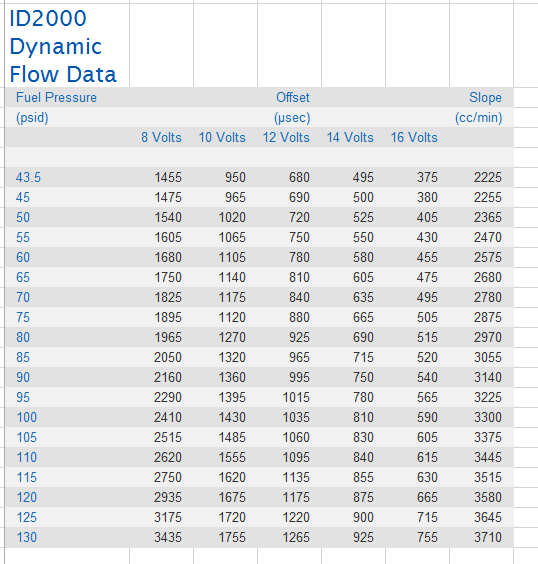MPG? pfft.
8/30/2013
Something occurred to me the other day when I was looking through old data to answer a question that a customer had about fuel economy. The question was (basically) “if you know your ultimate post-combustion air fuel ratio, and you know the amount of air volume going in, could you calculate your fuel level in the tank with out a fuel level sensor?”
as a sidenote, I love these kinds of questions
The answer is most certainly, yes. You would need to have a way to tell the ECU when the fuel tank was full and with how many gallons (via a set parameter in the ECU), but you would be able to calculate the fuel used, fuel trims, and a bunch of other nerdy data.
This got me thinking about some of the higher horsepower cars that I’ve tuned recently. At maximum power output, a GT-R that I worked with recently consumes an almost inconceivable amount of fuel. I thought it would be cool to (quickly) show you how to calculate the rough fuel consumption by just reading some fuel injector duty cycle charts, and knowing some basic info.
This file has been lost during the great website crash of 2016. Sorry
There are a few key things that we need to identify here. All of these graphs are lined up. So, that means that all of the data is on the same time register. So for instance, if you look to the “Engine Speed [rpm]” graph, you’ll see that the value at the yellow line intersecting it is 6928.9 RPM. This 6928.9 RPM point also corresponds with the 78.635% “Fuel Injector Duty Cycle [%]”. For the purposes of this demonstration, this is basically all we need to know. However, it is cool to see the calculated torque value there at the bottom, among all of the other data points of interest.
Sidenote of relevance if you notice something odd about the fuel injector duty cycle graph. The IDC plot is only sampling at 1hz (one sample every second). I didn’t think that I would be writing this at the time when I was tuning the car, and as it turned out, the IDC sample rate was very low. For the purposes of this we will just assume that the IDC is somewhere around 80-90 percent.
So, now we know that the Fuel Injector Duty cycle is around 80% at peak power / rpm. This number alone tells us nothing. We need to know the amount of volume that the injector will pass at 80% duty cycle. Luckily for us, these are awesome injectors, from an awesome company, that publishes plenty of info about them.

These injectors are classified as 2000cc / minute, nominal flow. For those of you not familiar with the metric system, that means that at 100% duty cycle, these are advertised as being able to pass 2 liters of fluid in one minute. Pretty significant.
If you take a look at the chart, you’ll see a number of different fuel pressure values on the left hand side. This is representative of the different fuel pressures that these injectors can operate with, and the respective change it has to it’s ultimate flow characteristics (see the corresponding flow values on the right hand side). The GT-R, with these injectors, had a base pressure of approximately 55 psi. This 55 psi value corresponds to 2470cc/min of fuel flow at maximum duty cycle.
Yet another sidenote of importance. You’ll notice that the fuel pressure differential value listed in that screen shot is actually more like 51 psi. For the purposes of this example, we’ll use the 55 psi value for ease of calculation
Cool, right?
So we know that 100% injector duty cycle, at 55 psi of fuel pressure, equates to 2470cc/min of fuel flow. We’re at 80% injector duty cycle according to our graph (above). Now for some easy math.
2470cc/min * 0.8 (80% duty cycle) = 1976cc / min
We almost forgot the really fascinating part. this 1.97 Liters of fuel per minute at max power is only for ONE CYLINDER. We need to now multiply this by 6.
1976cc / min * 6 (6 cylinder engine, 1 injector for each cylinder) = 11.85 Liters of fuel every minute.
There are 3.785 liters in every gallon.
11.85 Liters of fuel consumed every minute / 3.785 liters in every gallon = 3.132 gallons consumed every minute
We can go one step further, and figure out how long it would take the car to run out of fuel on a full tank. After a quick Google search, I found that the GT-R fuel tank is a scant 19.5 gallons.
19.5 gallon fuel tank / 3.132 gallons consumed every minute = 6.22 minutes till empty
So, it would take this lucky guy a little less than 6.5 minutes to clean out his fuel tank at 7000 rpm and 40 psi of boost, with E85 fuel. If he had the set to stay in the gas for 5 minutes straight, I would give him a high five.

